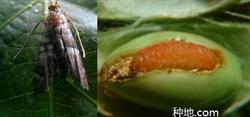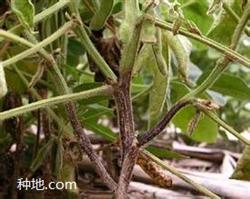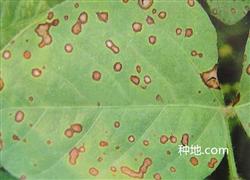Why do soybeans die in summer?

Summer soybeans in Huaibei region often die this summer. Why do soybeans die in summer? There are several main reasons for the death of soybean seedlings caused by yellowing leaves and dwarfing plants. The results and control measures are introduced as follows: first, soybean top blight causes brown ring class and growth point necrosis on the cotyledons of young seedlings at seedling stage. Severe death of the whole plant. In the infected plants in the early stage of flowering, the internodes of the diseased plants were prolonged, the tip of the stem was prolonged, the apical buds became brown and bent into hooks, and the plants began to become brittle and easy to fall down. In the susceptible plants from late flowering to seed-filling stage, the buds and leaves are easy to fall, the stem nodes and pith near the branches turn brown, the pods are very small, the pods are not well developed, the seeds in the pods are not full, often delay ripening, and remain green until harvest. Prevention and control measures: first, the plot where the spot occurs should be removed from the diseased plant. Second, it is confirmed that when soybean top blight occurs, spray control with 64% alum 600 times or 75% chlorothalonil 600 times in time. 2. Soybean cyst nematode caused the disease of dead seedling soybean at seedling stage, the cotyledons and true leaves turned yellow, the whole plant died when the growth retardation was serious, the adult plant was susceptible, the plant was dwarfed, the leaves turned yellow from bottom to top, the florescence was delayed, the apple was less, the grain was not full and the color was dark. Sensory recognition: the root system of the plant is underdeveloped, there are many whisker roots, few root nodules, and there are a lot of cyst nematodes (small yellow granules) on the roots. Prevention and control measures: (1) increase the application of organic fertilizer. The healthy growth of soybean was promoted by improving soil fertility. (2) timely irrigation to increase soil moisture. Soil drought is beneficial to the harm of early soybean cyst line. (3) spray the base of the plant stem with 1000 times of omethoate in time. Third, the dead seedlings caused by bean stalk fly disease mainly occurred in the fields or continuous cropping fields where more immature organic fertilizers were applied. The seedling stage showed that the lower leaves of the plant were normal and the upper leaves were all yellowed. Sensory recognition: peeling off the root neck, bean stalk maggots and maggot droppings can be seen in the culm. Control measures: spray 1000 times of omethoate or phoxim at seedling stage and flowering stage respectively. 4. Nutritional disorders mainly occur in fields lacking fertilizer, or in hyperactive plots with partial or single application of a certain nutrient element or severe drought. Different degrees of leaf yellowing, shrinkage and growth retardation occurred in the plant. Prevention and control measures: spraying Huimanfeng 50ml / mu plus 100g potassium dihydrogen phosphate per mu to spray the leaves of 30ml 50kg of water, the symptoms can be relieved or disappeared, and the plant can resume normal growth. 5. Herbicide residue in the previous crop: first, the herbicide was applied too late in the wheat field: due to the low temperature in early spring, the chemical weeding time in the wheat field of some farmers was postponed to April 10, and the use of Giant Star and Benzenesulfuron was increased correspondingly because of the older grass age, which was 0.5 times higher than the conventional dosage, and the pesticide residue in the soil was increased. The sowing date of summer soybean is mostly from June 5 to 10. The use period of Giant Star and Benzenesulfuron is a safe period 60 days after the next crop sowing, so the interval between the last crop application and the next planting period of some farmers did not reach a safe period, resulting in drug damage. Second, wheat fields use methyl, chlorosulfuron and their mixtures: most of the soil in Huaibei area is neutral and alkaline, and it is difficult to decompose them in alkaline soil, which is easy to cause drug damage to the next crop. If the wheat field is used in the next crop, the seedlings will be weak and stiff, and the heavy ones will not be able to set up seedlings, so that the yield will be reduced by about 80%. Although the use of such pesticides has been banned, there are still sales in the pesticide market, resulting in repeated drug damage. Prevention and control measures: timely watering after finding drug damage, and spraying foliar fertilizer or plant growth regulator. Click to see more soybean planting techniques click to see more food crop planting techniques
- Prev

How to prevent and cure soybean root rot?
How to prevent and cure soybean root rot? What is the best method to control soybean root rot by the following methods: 1. Select disease-resistant varieties. 2. Rotation with corn, millet, sweet potato and other non-host crops. 3. Increase the application of farm manure, potash fertilizer, phosphate fertilizer and so on when sowing. 4. Apply metalaxyl granules when sowing.
- Next

What is soybean continuous cropping?
How to prevent and cure soybean leaf spot? What is the cause of the disease? 1. Distributed soybean leaf spot occurred in Sichuan, Henan, Shandong, Jiangsu and other places in China, and autumn soybean occurred more frequently. Second, the symptoms show that the disease spot on the leaf is light brown to grayish white, irregular, and the edge is dark brown. The disease spot is born in the later stage.
Related
- The first cup of black tea in spring, the flavor and history of tea gardens in Kenya, Africa
- The computer can not only choose potatoes, but also grow tea rice. AI will grow winter oolong tea champion.
- It is not only the inflated tea bitten by insects, but also engraved with the four seasons tea in Beipu.
- The Oriental Beauty Tea Festival in Zhuxian County takes the stage at the weekend to experience the plus-size feast of oil tea.
- & quot; Oriental Beauty Tea & Exploration of Emei in Hsinchu, the hometown of quot;
- The new variety of strawberry "Tainong 1" dessert is the first choice with mellow aroma. Crimson gorgeous
- History of Tea in Taiwan: from Wild Inner Mountain to Export Tea Garden
- Two types of Taiwan Oriental Beauty Black Tea won the British three-Star Award for Childhood Tea Xiang Zhang Jiaqi changed from pilot to champion tea maker.
- Banana species and varieties: the planting history of Taiwan Xianren banana and dwarf banana is long, is banana disease resistant?
- Coffee planting Technology: Qianjie Coffee from Seedling to harvesting

